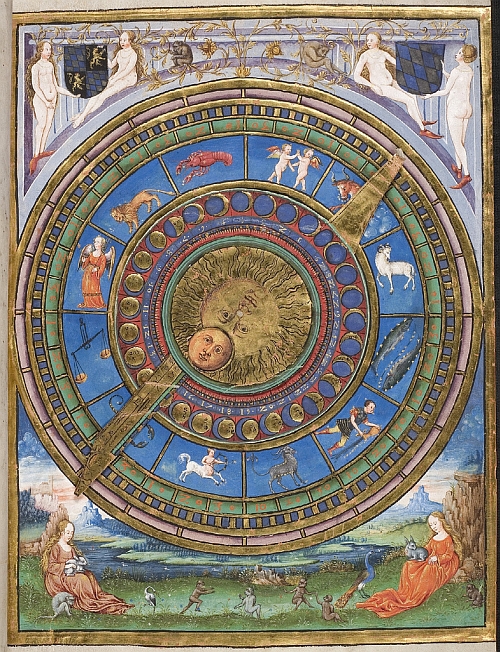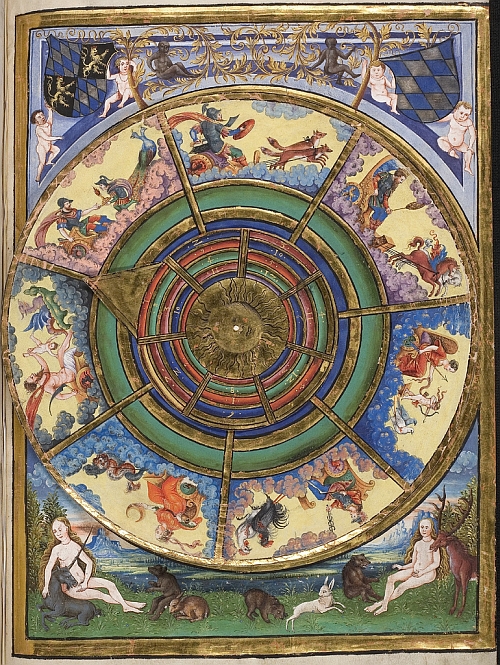
Click through the picture to experience my disappointment in not finding a larger version of this wonderful image. Actually, to truly experience my disappointment you will need to (painlessly) register at the Parker Library site and then try searching several whichways to unsuccessfully hunt down the manuscript. Tease.
The eagle illustration represents St John and comes from an 8th century Northumbrian gospel manuscript. Although it does not appear to have been uploaded as yet, if you enjoy seeing illumination work from previously inaccessible and priceless manuscripts, this site is a worthy place to spend some time.
"A new website, http://parkerweb.stanford.edu, will eventually include high-resolution images of every page of Corpus Christi's Parker Library [Cambridge University]. The remarkable collection includes 538 manuscripts spanning the sixth to the 16th centuries. [..] The beta version currently online includes about a sixth of the total content that eventually will be available. The project is scheduled for completion in late 2009."
"The beta site will be fully and freely accessible at least through 2008. But once the site's development and content are complete, full access will be available through institutional subscriptions only."
The above two images are from a fantastic sketch album: 'Souvenir of the N. American Indians, as they were in the Nineteenth Century' by George Catlin, 1850 at NYPL. [See Wikipedia for further associated links]
"Adam Schall was the first European ever to have been a member of the court bureaucracy in Peking. As part of his duties as head of the Office of Astronomy, he produced this large and truly spectacular six-part cosmological map, accompanied by pictures of astronomical instruments."
Although these Library of Congress images (from the Vatican) are fairly poor in quality, after splicing all the constituent parts together, the resulting image (which doesn't appear to be online in any cohesive form) looks ok at a slightly reduced size. [see polybiblio] Incidentally, Schall was the model for one of the memorable images seen in Kircher's 'China Monumentis' - 2nd last picture.
The Rogue Scholar reports that the Centre for Jewish History has/is digitised/ing forty Yiddish and Hebrew childrens books - these are complete books, not just the covers seen above. (They are also available from ICDL - International Childrens Digital Library)

The Polish Digital Library consistently uploads so much material that I only ever get to randomly scan perhaps ten percent of it. This print caught my eye, although I really don't know too much about it. Titled 'Mundus Universus', it was produced by Aleksander Tarasowicz in 1683. It obviously relates to the Jesuits (although cursory searching didn't identify anything of particular import in Poland about them in that year). The centre of the circle is hell surrounded by purgatory, outside of which is (I presume) the globe map of the world, followed by the atmosphere, the comet layer and then the cosmos. I guess the outer circle depicts doors into heaven. And the Jesuits are sitting comfortably out there in the clouds of course. There seems to be a mention of Psalms 14:8 in one of the outer rings,
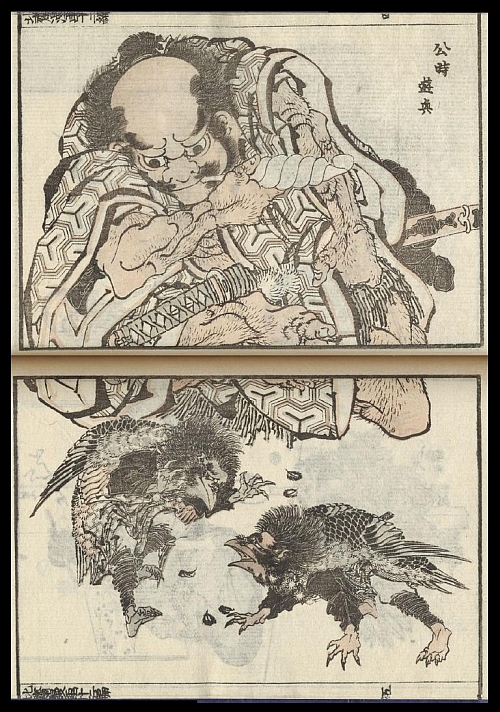
"Hokusai Manga is a series of sketchbooks by the Japanese artist Hokusai published in 1814-1878 in fifteen volumes. This is volume 12 (1834) [..and..] belongs to a large collection of books that Swedish explorer AE Nordenskiold brought back from his visit to Japan in 1879. [..] The Nordenskiold collection is housed in the library of the Museum of Far Eastern Antiquities and belongs to the Royal Library in Stockholm."The image above is spliced together from screencaps. I have a fairly ambivalent attitude towards most of the 'turn the pages' web sites: I often find them altogether too gimmicky. But I received an unsolicited message recently about a new product display site (Touch and Turn) and I think it's worth sharing. It's shockwave driven of course but less resources intensive than normal and the pages are actually centred in the middle of the screen (as opposed to being jammed up against one side) and the enlargements are simple without using annoying overlay screens. In any event, the quality of the illustration work in the book itself is beyond question.
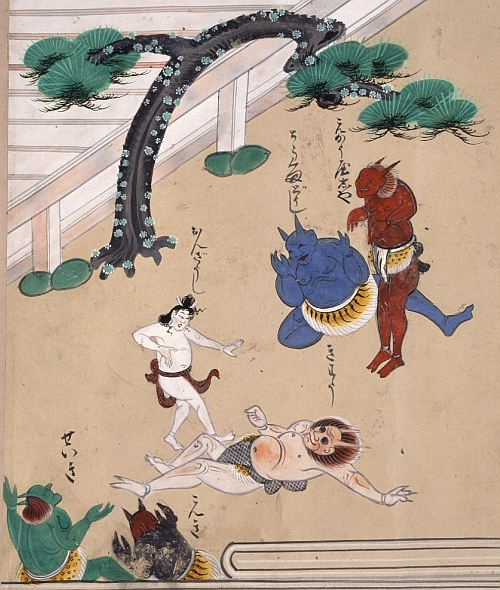
These three (detail) images are from the late Edo period (probably about 1850-1860). They come from a book hosted by the Akita Prefectural Library. From the shabby online translation it appears that the book belongs to a whole body of work relating to the legend of the 12th century Samurai warrior, Minamoto Yoshitsune.
Nearly a year ago, I posted an entry - Ukioye Masterpieces I - expecting that by announcing it as the first, I would find the motivation to come up with the second and so on. It didn't quite work out that way but I did venture back into the 5-volume set ('Masterpieces Selected from The Ukiyoye School', 1906-1909), hosted by Posner Library) a long time ago and the results of that fishing expedition have been uploaded into this Webshots album. They all seem to be of women. Whether they were in fact the dominant theme or whether I just gravitated towards them, I really don't recall. (I have my suspicions)
'Histoire et Description Generale du Japan', 1736 by Pierre-Francois Giffart is online among the Otis Cary Collection at Doshisha University Academic Repository (Vol. I & Vol. II - thumnbail pages). I put a selection in this Webshots album. The books cover everything from housing styles, costumes, maps, tools, culture &c.
Also from the Carey Collection at Doisha University: 'Illustrations of Japan' from 1822 by M Titsingh. Similar to above: presents all sorts of cultural illustrations of Japanese life. (another Webshots album selection)
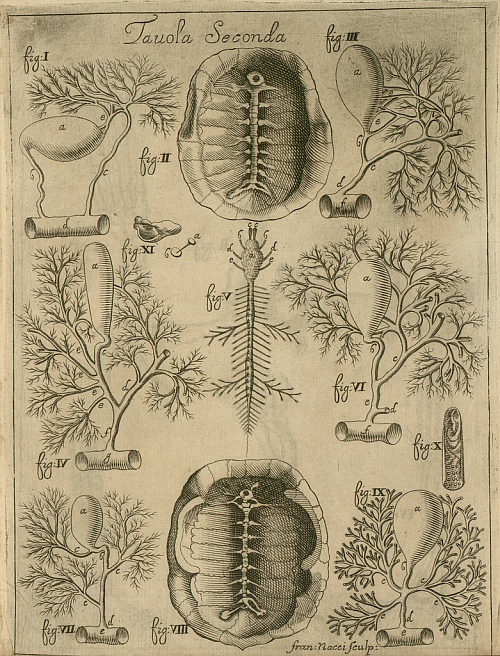
The first ever book devoted to turtles, unsurprisingly perhaps, dealt with their anatomy. The plates are more notable for their historical ephemera value rather than being of any great scientific (or artistic for that matter) significance. I think there about a dozen (huge) illustrations from memory. The 2-volume work, online at SICD Universities of Strasbourg is called 'Osservazioni Anatomiche Intorno alle Tartarughe Marittime' by Giovanni Caldesi, 1687. Caldesi was the physician to the last Grand Duke of Tuscany and a pupil of Francesco Redi.
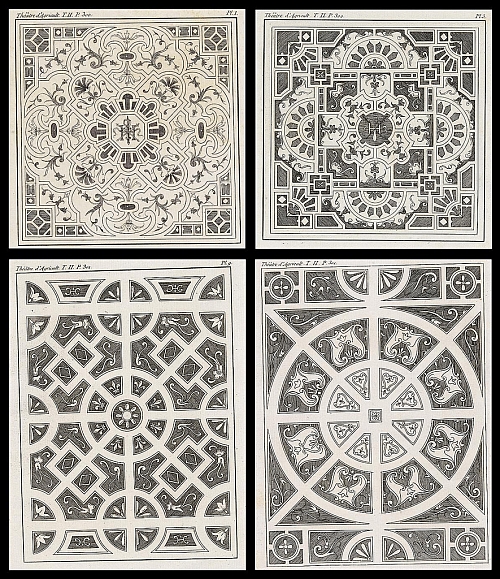
Known as the 'Father of Agronomy' (agronomy being the application of soil and plant science to crop production and land management), Olivier de Serres dominated the 17th century approach to agriculture in France with the publication of his - I nearly wrote 'ground-breaking' - enormous 'Théâtre d'Agriculture et Mesnage des Champs' in 1600. It featured a series of parterre* illustrations of various royal residences by Claude Mollet. I've uploaded all the plates from the volumes to this Webshots album. The books are online at the Rare Books Digital Library of Brazil (Vol I & Vol II).
Although they are fairly small, I couldn't pass up the opportunity to gank a couple of images from the Thomas Bartholin 1678 'treatise' on unicorns: 'De Unicornu Observationes Novae' [ebay]
Other things...
- "The Atlas of Early Printing is an interactive site designed to be used as a tool for teaching the early history of printing in Europe during the second half of the fifteenth century."
- Bookmaking Tutorials - link set from TJBookarts related to simple/complex bookbinding, pop-ups, star books, Japanese and other forms of binding.
- The art of the cat from Archive.org's weblog
- Dying Speeches and Bloody Murder: crime broadsides collected by the Harvard Law School Libray.
- "The Catich Collection provides digital access to the artwork of Fr. Edward Catich (1906-1979). Fr. Catich, one of the world's finest calligraphers, was known as an international authority on stone incising, typography and stained glass fabrication, and as the foremost authority on the Roman alphabet, its origin, nature and history".
- Gardenhistorygirl - gardens now and then.
